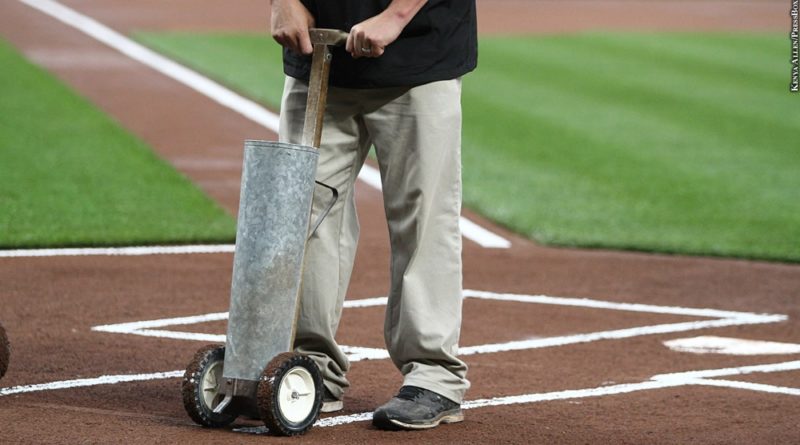All things considered, baseball’s All-Star break, AKA the Shohei Ohtani Coming-Out Party, arrived just in time.
Lord knows, judging from the reception he got in Colorado while hosting the draft, commissioner Rob Manfred needs as many distractions as he can get right now. The opportunity to showcase Ohtani provided as much and was certainly a delicious opportunity.
But with Ohtani making an early exit from the Home Run Derby, while pitching one uneventful inning and having two routine at-bats, it didn’t turn out to be quite the global celebration intended. More like a necessary pause for the cause.
Meanwhile, the amateur draft was introduced to the proceedings and it is much more than just an attempt by Major League Baseball to follow the National Football League’s lead. What is officially known as the Rule 4 Draft will never rival the NFL’s extravaganza, but it would be a mistake to dismiss it as a sideshow for the All-Star break.
In reality, the new setup for baseball’s annual draft is designed to have a long-range effect. Remember when everyone seemed to hail the move away from the June date that was in conflict with the College World Series?
College coaches seemed especially happy to rid a distraction from their showcase event. They may soon come to realize that any benefit was short term.
The Orioles’ most recent draft class, with 20 of the 21 choices coming from the college level, gives a pretty good idea of the direction MLB seems to be taking. If there has ever been a draft when a team used only one selection on a high school player it escapes memory.
Virtually (in keeping with the times) overlooked in the process is that the new draft date effectively delays the start of an amateur’s professional career by a year. With all draft-eligible college players at least 21 years of age, that means most will start their careers in their age-22 season.
If desired, teams will have four years of minor-league control before needing to put a college player on the 40-man roster, at which time they would also have the opportunity to option a player to the minor leagues. It takes three years of major-league service time (except for a small class of “super twos”) to gain arbitration status — and another three years to gain free agency.
When you start doing the math, and with all of the formulas in play in this analytical era it would be a serious mistake not to, it’s easy to gauge that the average player coming out of college won’t be eligible for arbitration until his late 20s and free agency until his early 30s.
If you think that’s the direction MLB would like to be headed, go to the head of the class. Controlling service time is a big part of the financial analytics and pushing back the amateur draft will only help.
The elephant in the room (he’s always there somewhere) is these numbers are all part of the current collective bargaining agreement, which expires Dec. 1. Service time, arbitration and free agency will be central to any new agreement, so everything is open to negotiations.
History tells us that the Players Association is more in tune with current rather than future members, so the Rule 4 Draft is not likely to be a priority and probably won’t be affected. You can be sure, however, that one group not vocal in support of moving back the draft — the player agents — will have a voice in the matter down the road.
College coaches who supported the change in the draft may find it harder to maintain commitments from top-tier prospects. They no doubt will realize that the earlier draft only affected the eight teams playing in Omaha and that many of their players will be forced into the draft-eligible wooden bat leagues (strongly supported by MLB, by the way) instead of starting their professional career.
There has been a growing feeling that Manfred would like to see a much smaller Rule 4 Draft and the creation of “development leagues,” along the lines of the National Basketball Association model. Such a move would destroy the minor league system, and it must be pointed out that the commissioner hasn’t endorsed such a plan.
But there doesn’t seem to be much doubt that the industry believes delaying entrance to free agency is the surest way to get under control of the lavish contracts (which now seemed to be limited to players reaching free agency in their mid-to-late 20s).
Stay tuned.
* * *
While the introduction of the amateur draft perhaps played only a small role, it nevertheless helped divert attention from an otherwise turbulent first half of the season marked by controversy with respect to tacky stuff, spin rate, exit velocity, launch angles, seven-inning games and the farce of having umpires frisk pitchers either before or after they came to the pitching mound — and sometimes both.
To that extent nothing could hide the embarrassment of the spectacle that took place at Camden Yards July 9. It was bad enough that the regular pitching staff couldn’t get the Orioles through a 12-1 beating by the White Sox by itself, as infielder Pat Valaika had to record the final out (against the only batter he faced).
What bordered next bordered on the ridiculous, as Valaika was “frisked” before he reached the dugout. If Major League Baseball feels the necessity to police pitchers in search of illegal substances, so be it. But is it asking too much to allow the umpires to use a little common sense?
You know, the same kind Manfred used when he said seven-inning games seemed to be a thing of the past?
Jim Henneman can be reached at JimH@pressboxonline.com

